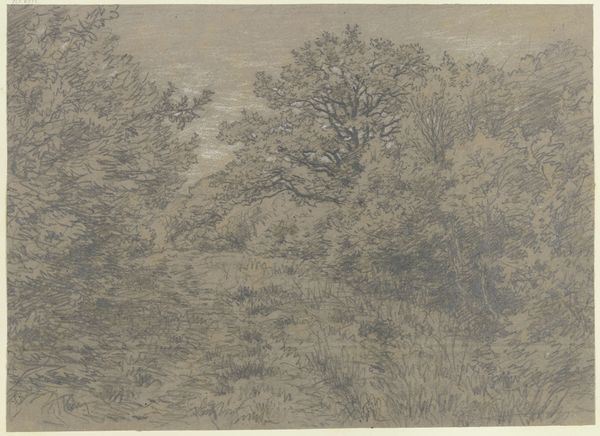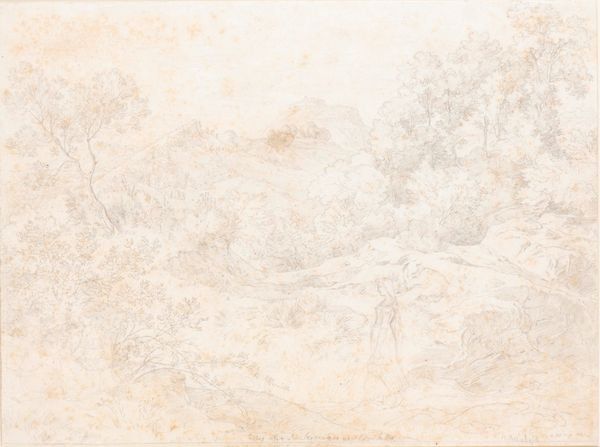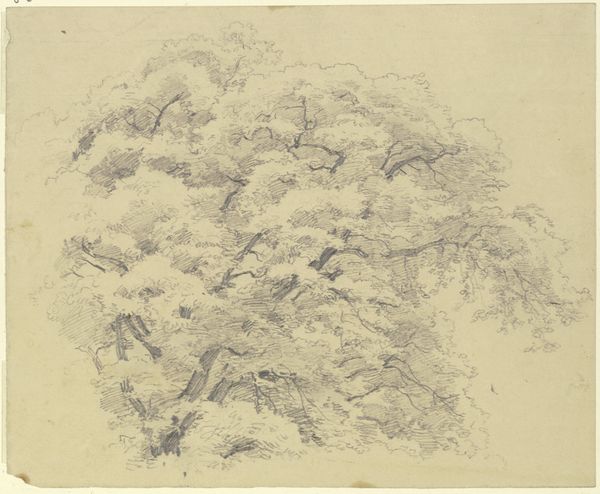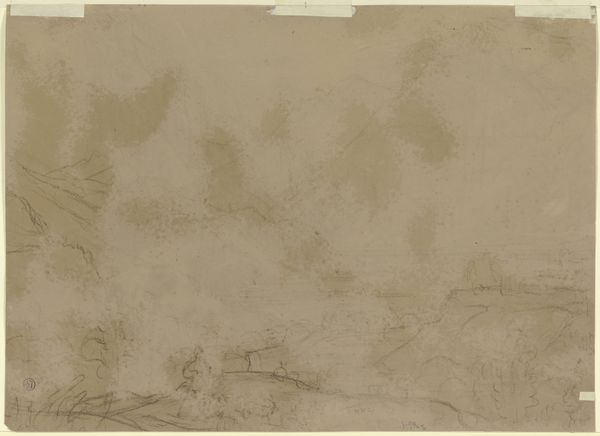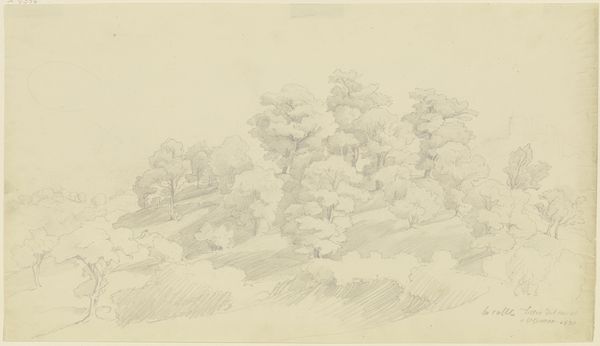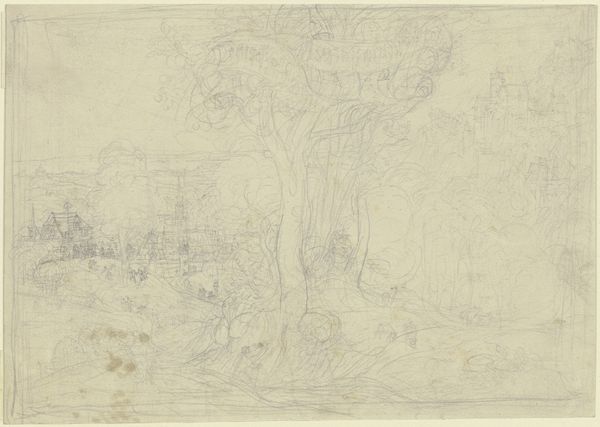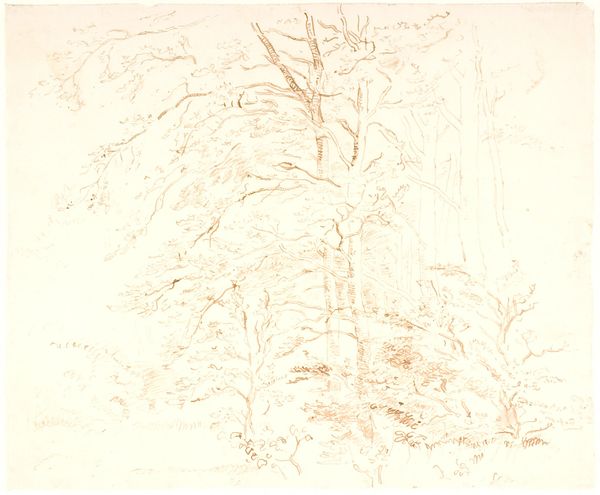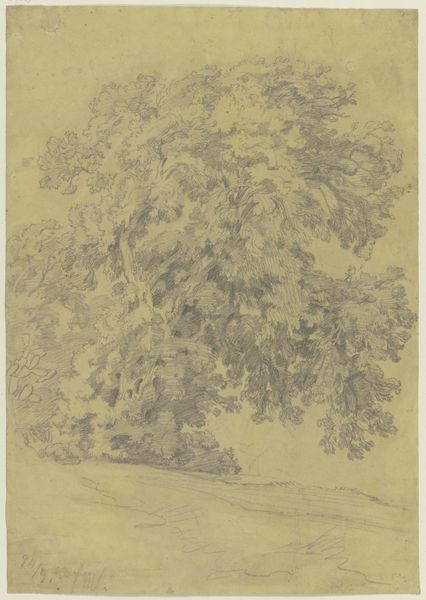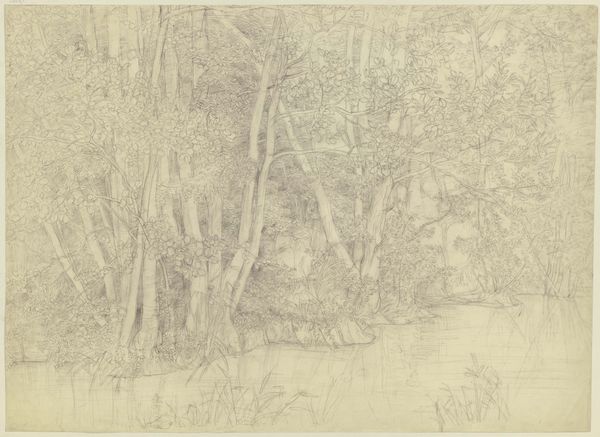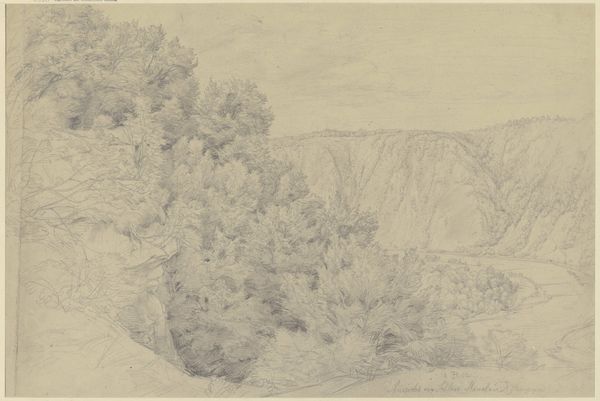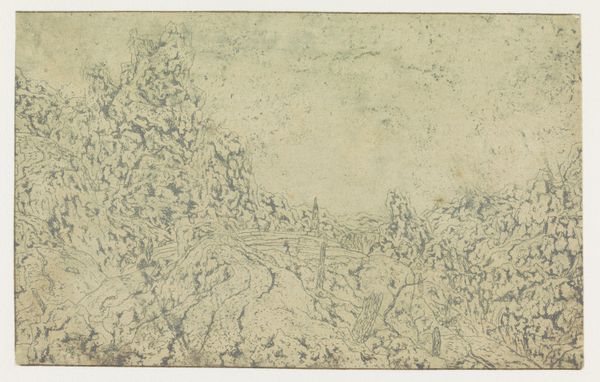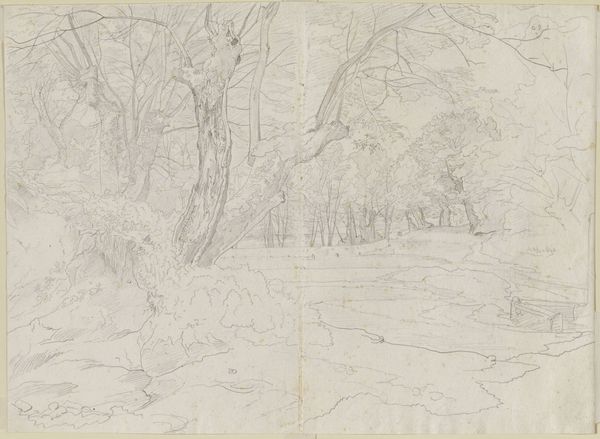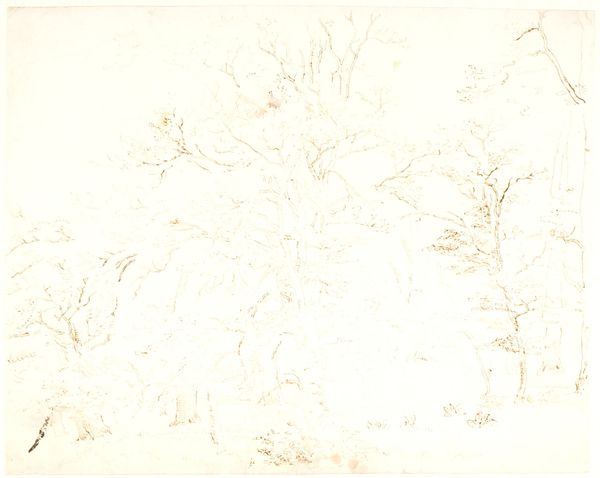
Copyright: Public Domain
Curator: Louis Eysen’s drawing, "Felling of Trees," created in 1868, presents us with an intriguing plein-air study rendered in pencil on paper. What are your initial impressions? Editor: Immediately, I’m struck by the sheer density and the implied labor. It feels like a portrait of relentless activity, of natural resources being actively shaped, consumed… almost exploited. There's a weight to all that grey pencil. Curator: I appreciate your read on labor here. Indeed, Eysen produced this sketch at a pivotal historical juncture, marked by intensifying industrial demands and consequential natural resource consumption. This prompts me to contemplate his positioning on broader questions tied to industrialization, ecological consequences, and societal transformations. Was he documenting an inevitable progress, or offering a subtle commentary on ecological change? Editor: That tension feels inherent in the materiality. The graphite itself comes from the earth, is extracted, processed. Here it is used to document the felling of trees – another raw material, now visualized through industrial tools. You almost feel the grain of the paper pushing back against the artist's hand, asserting its own material presence amidst the act of artistic production and material extraction. Curator: I agree. Let's consider the perspective offered. By depicting these uprooted trees, isn't he compelling viewers to reflect upon their inherent link to the environment? This raises poignant concerns related to gender roles in both society and environmental preservation, doesn't it? After all, women were frequently tasked with overseeing domestic economies closely tied to their local environments. Editor: The choice of a drawing is crucial, too. Pencil sketches were often preliminary works. The artist likely planned to come back to this, potentially in paint. In that sense, even this relatively simple act, the creation of an etching, holds a potential or promise yet unrealized; in its material, there remains a feeling of something pending. Curator: Your material-oriented perspective has profoundly shifted my reading of this piece. Thank you for the valuable exchange. Editor: Likewise! Considering art through the lens of its tangible means of creation offers powerful insights.
Comments
No comments
Be the first to comment and join the conversation on the ultimate creative platform.

